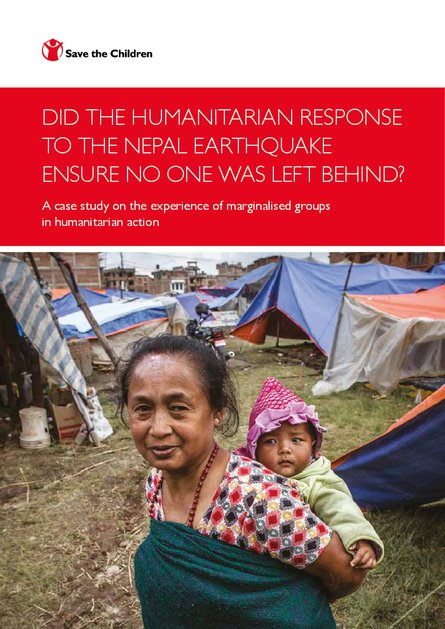
In April and May 2015, two large-scale ear thquakes struck Nepal, killing almost 9,000 people, damaging over half a million houses and displacing hundreds of thousands of people from their homes. Natural hazards are indiscriminate: ear thquakes have no regard for social hierarchy, gender, age, disability, religion, ethnicity, or caste. But the impacts of natural hazards – and the humanitarian response to them – can easily discriminate against the very people who are most in need. When a disaster hits, vulnerable and marginalised groups have fewer and more fragile livelihoods options, less access to social and economic resources, less ability to influence the relief effor t, and face more barriers accessing assistance – often without the political voice that would enable them to advocate for those barriers to be addressed. Unless these challenges are purposefully addressed as par t of the relief effor t, humanitarian crises can exacerbate and entrench social disadvantage, with the risk that already marginalised people will be left even fur ther behind. This repor t uses the response to the Nepal ear thquake as a case study through which to examine this risk.
